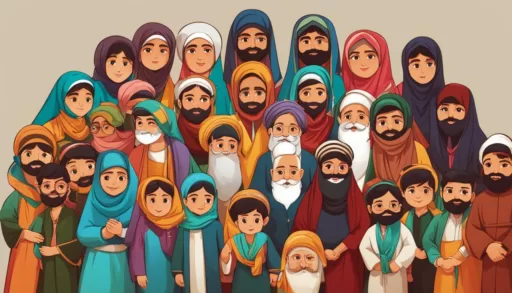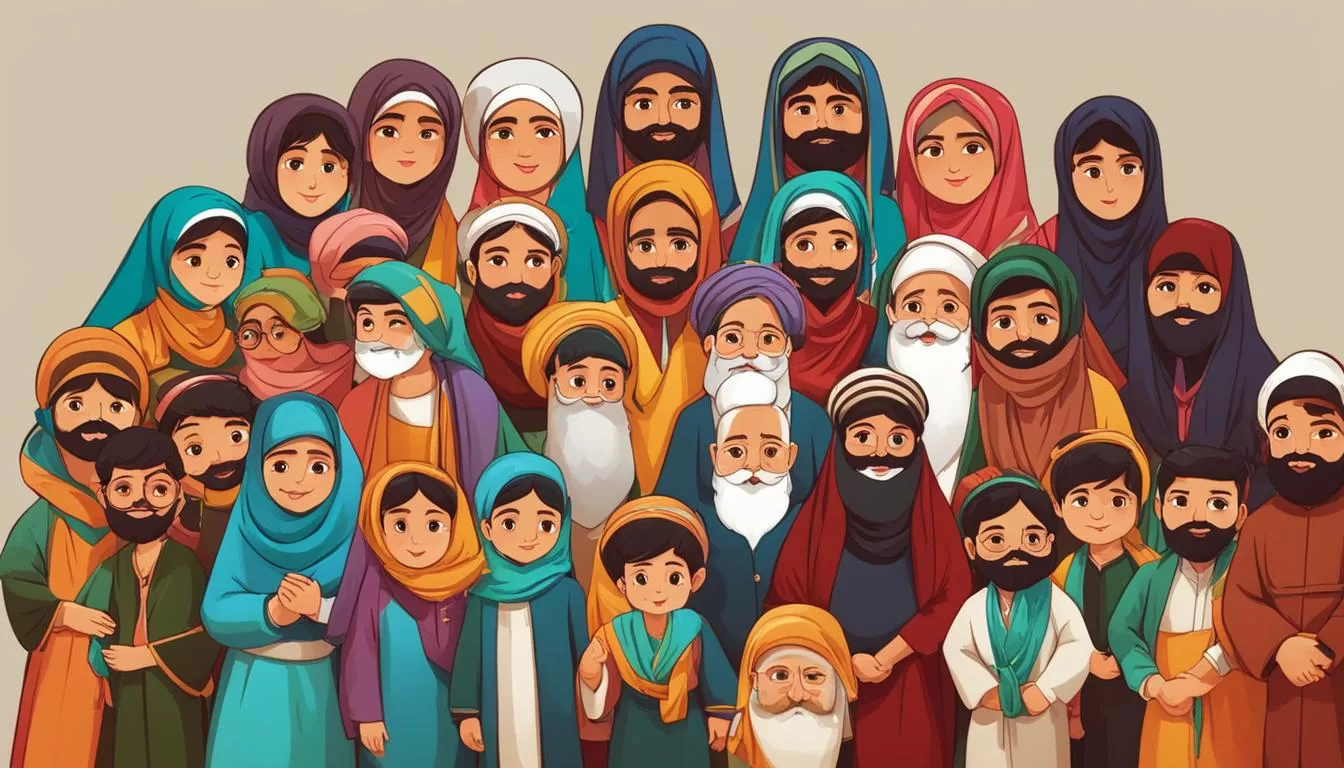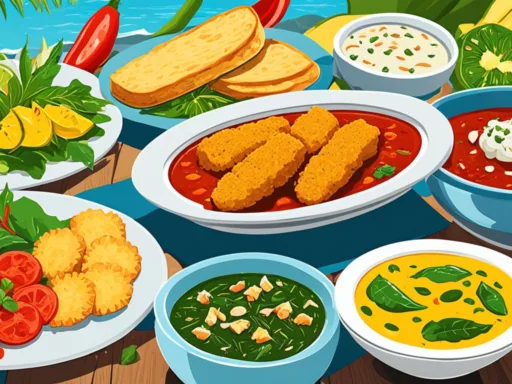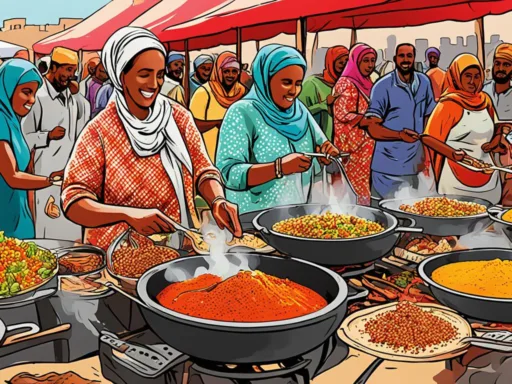The rich cultural tapestry of Iran is reflected in its complex linguistic landscape, where various languages flourish and add color to the country’s vibrant heritage. Amidst this kaleidoscope of dialects, the Persian language, known locally as Farsi, stands out as the official and most prevalent language, binding the nation with its long-standing literary and historical roots. Beyond Persian, Iran boasts an array of ethnic languages which encompass the essence of the country’s diverse genetic makeup, such as Azerbaijani, Kurdish, and Arabic, among others.
As we delve deeper into the realm of languages spoken in Iran, it becomes evident that each language and dialect represents a unique facet of Iranian identity, contributing to the intricate linguistic diversity found within its borders. This diversity is not only a testament to the nation’s multifarious ethnic groups but also echoes the complex history that has shaped modern Iran.
Key Takeaways
- The Persian language or Farsi is the official language of Iran, uniting the nation through common speech and written word.
- Linguistic diversity in Iran is a hallmark of the nation, showcasing the coexistence of multiple languages from different families.
- Several ethnic languages thrive across Iran, affirming the country’s history of ethnic and cultural plurality.
- Iran’s linguistic repertoire includes not only widely spoken dialects but also minority languages that hold significance in their respective regions.
- The pervasiveness of the Persian language in Iran does not overshadow the presence of other languages, which are vital to the nation’s identity.
An Overview of Iran’s Linguistic Tapestry
The multifaceted language profile of Iran paints a vivid picture of its rich ethnic and cultural diversity. Within its borders, an array of languages spoken in Iran are testament to a long history interwoven with myriad peoples, traditions, and customs. The official languages of Iran function as a uniting force, with the Farsi language of Iran taking center stage in public life and education. However, the country’s vast linguistic tableau extends beyond Farsi to include a treasure trove of regional languages Iran and minority languages Iran that reflect the voices of various ethnic communities.

Iran’s Constitution magnifies the primacy of Persian as the conduit for official government communication and educational instruction. Yet, in the weaving of Iran’s sociolinguistic fabric, strands of Armenian, Georgian, Circassian, and Hebrew are intricately knotted, each finding uses in media, literature, and the life of their respective speech communities. Data from the 1990s census reveals a linguistic mosaic wherein new mothers reported using languages ranging from Persian to Azerbaijani and Kurdish, to rarer dialects such as Luri, Gilaki, and Mazanderani.
Despite the government’s stance towards fostering a predominantly Persian-speaking nation, the linguistic ecology of Iran is one of accommodation rather than complete assimilation. This approach preserves a sound environment for the flourishing of both major and minority languages in Iran. Regional broadcasts, community schools, and cultural festivities maintain the vibrancy of these languages, safeguarding their heritage and ensuring that they continue to be a living part of Iran’s societal tapestry.
| Language | Est. Speakers in Iran | Primary Regions Spoken |
|---|---|---|
| Persian (Farsi) | Approximately 53% | Nationwide |
| Azerbaijani | Approximately 18% | Northwestern regions |
| Kurdish | Approximately 10% | Western Iran |
| Luri | Approximately 6% | Southwestern Iran |
| Gilaki and Mazanderani | Approximately 7% | Northern Iran |
| Arabic | Approximately 2% | Southern and Southwestern Iran |
| Other Languages | Approximately 1% | Dispersed Minority Communities |
The Predominant Language: Persian (Farsi)
Farsi language Iran not only connects citizens across the nation but it also embodies a cultural and historical saga teeming with lore and learnedness. As the official language, Persian language Iran anchors itself in everyday communication, academia, and the arts, asserting itself as more than mere rhetoric—it is the essence of Iranian identity. From bustling Tehran to the windswept alleys of Yazd, Farsi is the cornerstone of conversation and the conduit through which a rich literary tradition is both preserved and perpetuated.
Tracing its origins back to the opulent courts and conquests of the ancient Persian Empire, Farsi’s impact on the linguistic landscape is profound. Its script curls elegantly on the pages of history, weaving Iranian heritage with threads of sophistication and learning. Despite common misconceptions, Farsi is linguistically distinct from Arabic; it belongs to the Indo-European family, establishing a separate branch of linguistic lineage. Contrary to the trilled cadences of Arabic, Farsi unfolds with a melody of its own – it is the romantic poet of dialects within a land brimming with antiquity and allure.

Throughout time, the Persian language has been a magnanimous host to words and expressions burrowed from its neighbors and conquerors. This exchange has enriched Farsi, conferring upon it a vocabulary that is both extensive and eclectic. The modern-day diversity of Persian language Iran is reflected in its many dialects, each with unique idioms and phonetics, yet all nested under the grand umbrella of Farsi’s standard form. This dialectical variation paints a vivid mosaic across the Iranian topography, enhancing its linguistic volume.
Whether imprinted on the sacred pages of poetry, broadcast across the airwaves, or recited in the halls of academia, Farsi serves as the lifeblood of Iranian culture. It is the language in which love songs serenade, deals are made, and stories of olden times are retold under the luminous moon. The proliferation of Farsi language Iran as the medium for notable literary works, journalistic endeavors, and scientific inquiry underscores its unrivaled position in the hearts and minds of the Iranian people.
| Aspect | Details |
|---|---|
| Linguistic Family | Indo-European |
| Role in Iran | Official Language, Primary Medium of Education |
| Cultural Significance | Literary Heritage, Scientific Discourse, National Identity |
| Common Confusion | Misidentified as Arabic due to Geographic Proximity |
| Dialects | Multiple Regional Variants across Iran |
And thus, the story of Farsi—Persian language Iran—is not merely about syntax or semantics. It is an ongoing narrative that encapsulates the soul of a nation, a whisper from the past that continues to shape the discourse of the present and enlightens a path toward the future.
Languages of the Iranian People
The landscape of language in Iran is marked by its astonishing variety, a testament to the cultural and ethnic intricacies that have shaped the nation. From urban centers to remote villages, the voices of Iran are as diverse as its people, speaking volumes of a storied past and vibrant society. Contributions from numerous regional languages Iran, a myriad of dialects Persian language Iran, the resonant tones of Turkic languages Iran, and the rich tapestries of ethnic languages Iran come together to form an intricate oral mosaic.
Regional Dialects and Variants of Persian
The Persian language unfurls across Iran in a spectrum of dialects characterized by unique phonetic and lexical distinctions. From the gentle lilt of Tehrani to the mellifluous undertones of Shirazi and the cadence of Esfahani, these variations enrich the nation’s linguistic identity. Despite their differences, these dialects Persian language Iran are mutually intelligible, paving the way for unity amidst diversity.

As the lingua franca, Persian anchors Iranian communication, but the regional dialects breathe local life into it. In every market, school, and home, these dialects coalesce to keep the Persian language vibrant and adaptive to regional nuances.
Turkic Languages within Iranian Borders
Surpassing the confines of Persian influence, the Turkic tongues stand as a declaration of Iran’s intricate ethnic patchwork. The Azerbaijani language Iran claims prominence especially in the northwestern reaches, sharing a kinship with modern Turkish and playing a pivotal role in the daily lives of millions. Here, too, are heard the narratives of Turkmen herders and the melodies of Qashqai nomads, each Turkic dialect adding a thread to the national tapestry.
Acknowledging the presence of these languages is acknowledging the story of a significant portion of the Iranian populace. Their voices echo through the Zagros Mountains and across the arid plains, preserving a heritage as enduring as the land itself.
Indigenous and Ethnic Minority Languages
Iran’s storied past and crossroad geography have birthed a haven for languages that are now emblems of proud communities. The Kurdish language Iran, spoken by millions in the western highlands, adds to the nation’s symphony, alongside the sacred whispers of Arabic-speaking minorities in the regions abutting the Persian Gulf and Mesopotamian basin, where the Arabic language Iran is more than a vestige of conquest—it’s a living slice of history.
Beyond these more widely known tongues, the ethnic languages Iran catalog features the storied cadences of Aramaic, the ancient speech of Assyrians, the vibrant verses of Armenian liturgy, and the distinct articulation of Georgian and Circassian narratives. Names like Lurī encapsulate the resilience of the mountain folk, while Hebrew persists in the sacred chants of an ancient community.
The commitment to cultural conservation ensures that these minority languages Iran are not mere footnotes but active voices in the cultural dialogue, cherished for their unique contributions to the nation’s identity.
| Language Category | Languages/Dialects | Regions/Communities |
|---|---|---|
| Persian Dialects | Tehrani, Shirazi, Esfahani, Mashadi | Pan-Iranian Presence |
| Turkic Languages | Azerbaijani, Turkmen, Qashqai | Northwestern Iran, Turkmen Sahra, Nomadic Tribes |
| Indigenous Languages | Kurdish, Lurī, Arabic, Armenian, Assyrian, Georgian, Circassian | Western Iran, Persian Gulf Area, Isolated Ethnic Enclaves |
The language portrait of Iran is a dynamic and evolving panorama, reflective of the diverse peoples who have planted their roots in its soil. It encapsulates the depth and breadth of the human experience, rendering the country’s linguistic heritage not just a matter of academic interest but a cherished aspect of daily life.
Historical and Religious Significance of Arabic in Iran
The imprint of the Arabic language Iran on the social, religious, and historical fabric of the nation is profound and enduring. With the Islamic conquests laying the groundwork for cultural amalgamation, Arabic not only suffused the literary and scholastic traditions of Iran but also became a symbol of theological and intellectual exchange. The historical languages of Iran entwined with Arabic, allowing for a linguistic interplay that enriched the Persian tongue with the infusion of Arabic lexicon and expressions.

Today, the reverberations of the Arabic language Iran extend beyond the confines of communal dialects into the realm of education, where Classical Arabic holds a place of distinction. Due to its significance as the lingua franca of Islam, encapsulated within the pages of the Qur’an, Classical Arabic forms a cornerstone of the religious scholarship in Iran. It represents continuity and a resonance with a profound spiritual legacy that has shaped the morality, laws, and religious rites across the country.
The influence of the Arabic language within the context of Iranian culture extends beyond mere communication; it is a pivotal channel for preserving religious doctrine and fostering scholarly discourse. – A scholar on linguistic diversity Iran
- Classical Arabic’s maintained presence in schools underscores its undiminished importance.
- The Arabic language serves as a critical tool for religious scholarship and Islamic studies.
- The rich reservoir of Arabic loan words in Persian highlights the deep historical interconnection.
| Language Influence | Significance |
|---|---|
| Historical Role of Arabic | Primary literary language post-Islamic conquest |
| Arabic Loanwords in Persian | Reflects centuries of linguistic and cultural exchange |
| Classical Arabic in Education | Emphasized for its religious significance, connects scholars to Islamic heritage |
| Arabic in Modern-Day Iran | Continues to be essential for religious activities and theological studies |
In summing up the impact of Arabic language Iran, one cannot overlook its ongoing contribution to the richness of linguistic diversity Iran. The Arabic language contributes an indispensable verse to the eternal poem that is Iran’s linguistic narrative, bridging past and present, connecting the faithful with their deep-seated beliefs, and echoing the scholarly pursuits borne out of historical languages in Iran.
Conclusion: A Resonant Mosaic of Iranian Linguistic Heritage
The linguistic panorama of Iran is as rich and evocative as its storied history. Linguistic diversity in Iran is not merely a characteristic of the nation—it’s the very essence of its being. Iranian society, composed of a multitude of ethnicities, reverberates with the rhythms of a wide range of languages spoken, from the ubiquitous Persian—the very heart of Farsi language Iran—to the cherished tongues of ethnic and minority groups. These languages form an auditory tapestry, each strand a vital thread in the country’s cultural fabric.
Iran’s prevailing language, Persian, colloquially known as Farsi, functions as the cornerstone of national identity—permeating education, governance, and daily communication. Yet, the longevity of its sister languages, whether through the music of Azerbaijani dialogues in the north or the lyrical Kurdish expressions in the west, speaks volumes of Iran’s respect for its roots and the enduring legacy of these tongues. As impressive as the statistics are that define the major languages spoken in Iran, it is the everyday use of these languages that breathes life into the statistics, confirming the depth of Iran’s linguistic identity.
Despite the state’s inclination towards a singular linguistic narrative, the multidimensional reality presents an Iran steeped in a harmony of expressions. The cultural confluence of languages, ranging from Gilaki and Mazandarani in the lush northern landscapes to the ancient language of Arabic enriched by religious history, reaffirms the resilience of linguistic diversity Iran has nurtured throughout the centuries. Thus, the dialogue on the languages spoken in Iran remains as much about Persian language Iran as it is about celebrating the cacophony of its many voices—echoing the stories, wisdom, and spirit of its people.
FAQ
What is the official language of Iran?
Persian, also known as Farsi, is the official language of Iran. It is used in government, education, and media.
How diverse is the linguistic landscape of Iran?
Iran’s linguistic landscape is very diverse, home to languages from various linguistic families including Indo-European, Turkic, Semitic, Kartvelian, and North Caucasian, reflecting the country’s rich ethnic tapestry.
Are there other languages spoken in Iran besides Persian?
Yes, a myriad of other languages are spoken in Iran, including Azerbaijani, Kurdish, Luri, Gilaki, Mazanderani, Arabic, Baluchi, Turkmen, Armenian, and various others that mirror the ethnic diversity of the nation.
Do regional dialects of Persian exist?
Yes, regional dialects of Persian are prevalent throughout Iran, including Tehrani, Shirazi, Esfahani, Mashadi, and numerous others, each carrying its distinct characteristics.
What Turkic languages are spoken in Iran?
Azerbaijani is the most widely spoken Turkic language in Iran, especially in the northwest. Other Turkic languages and dialects like Turkmen and Qashqai are also spoken.
Are there designated regions where ethnic languages are predominantly spoken?
Yes, certain ethnic languages are predominantly spoken in specific regions of Iran. For example, Kurdish is mainly spoken in the west, Azerbaijani in the northwest, and Arabic in the southwest.
Is Arabic spoken in Iran and why is it significant?
Arabic is indeed spoken in Iran, mostly by Arab minorities. It has historical and religious significance, given Iran’s Islamic heritage, and Classical Arabic is key in religious education and practice.
How does the Iranian government address language diversity?
While Persian is encouraged as the national language, Iran allows the use of minority languages in various contexts, including media and education, reflecting a degree of linguistic tolerance.
How has the Persian language been influenced historically?
The Persian language has been significantly influenced by Arabic through historical interactions following the Islamic conquest. It has incorporated numerous Arabic loanwords and expressions into its lexicon.






